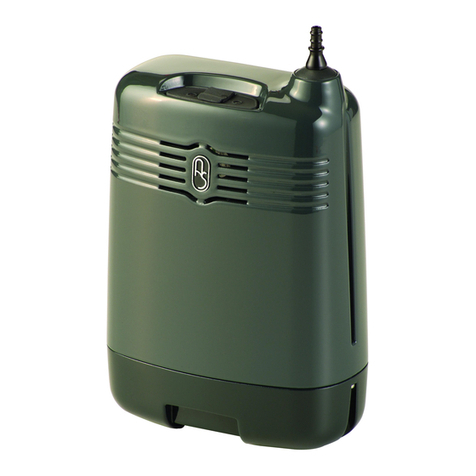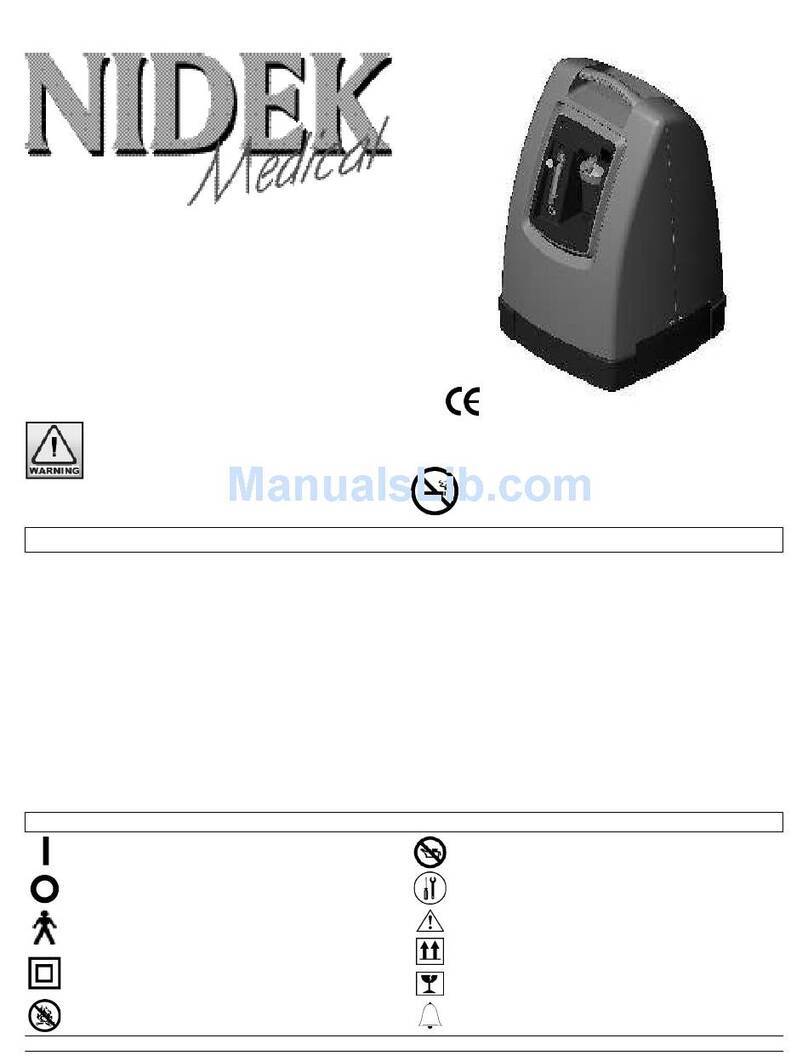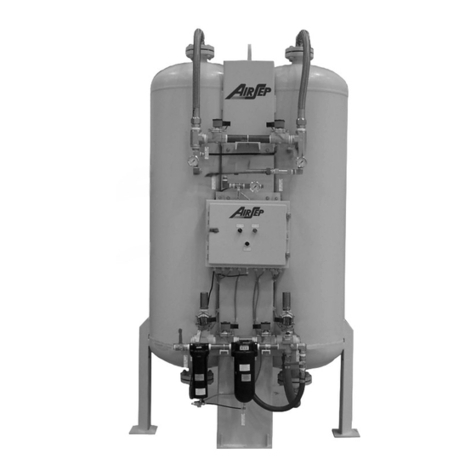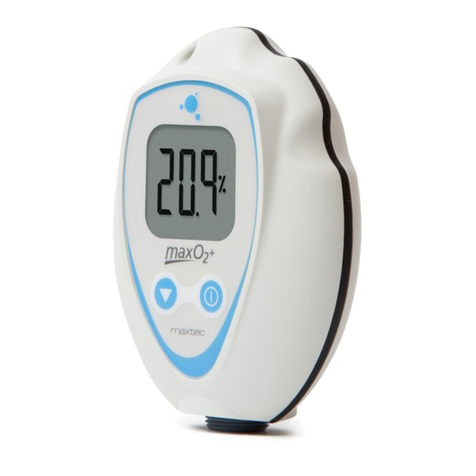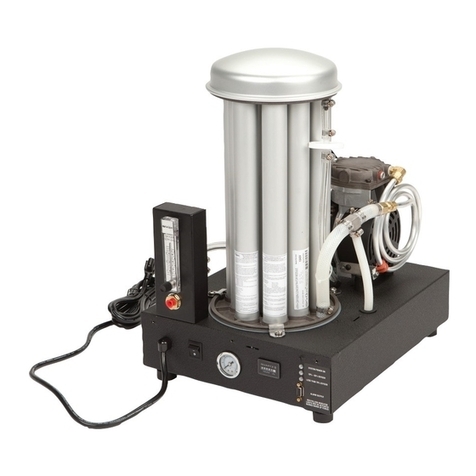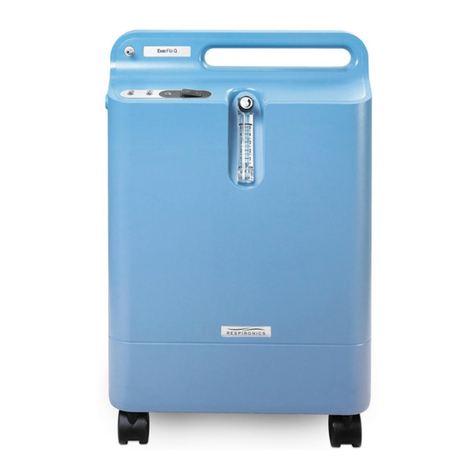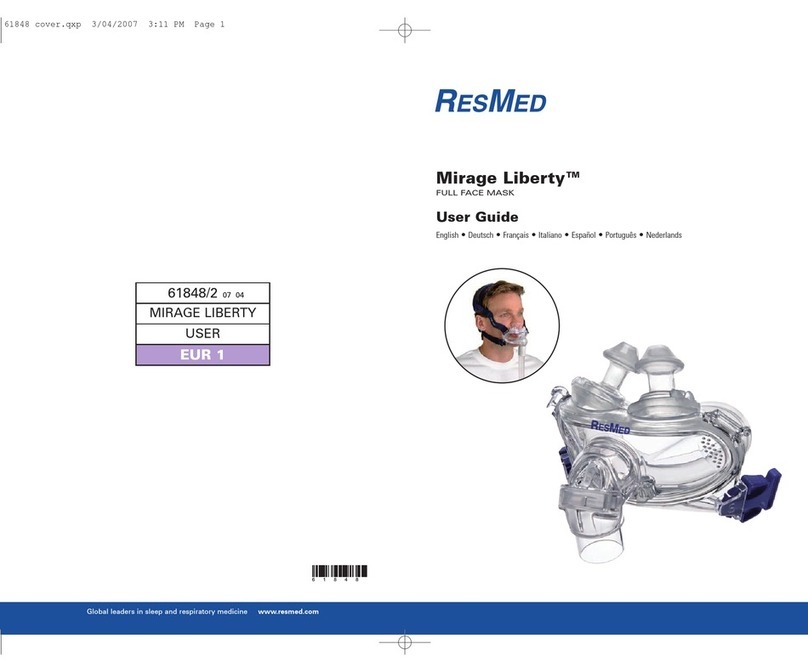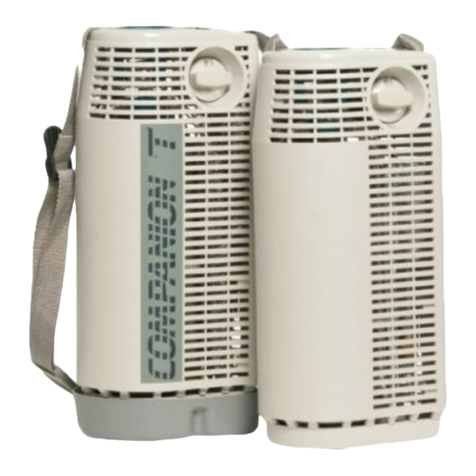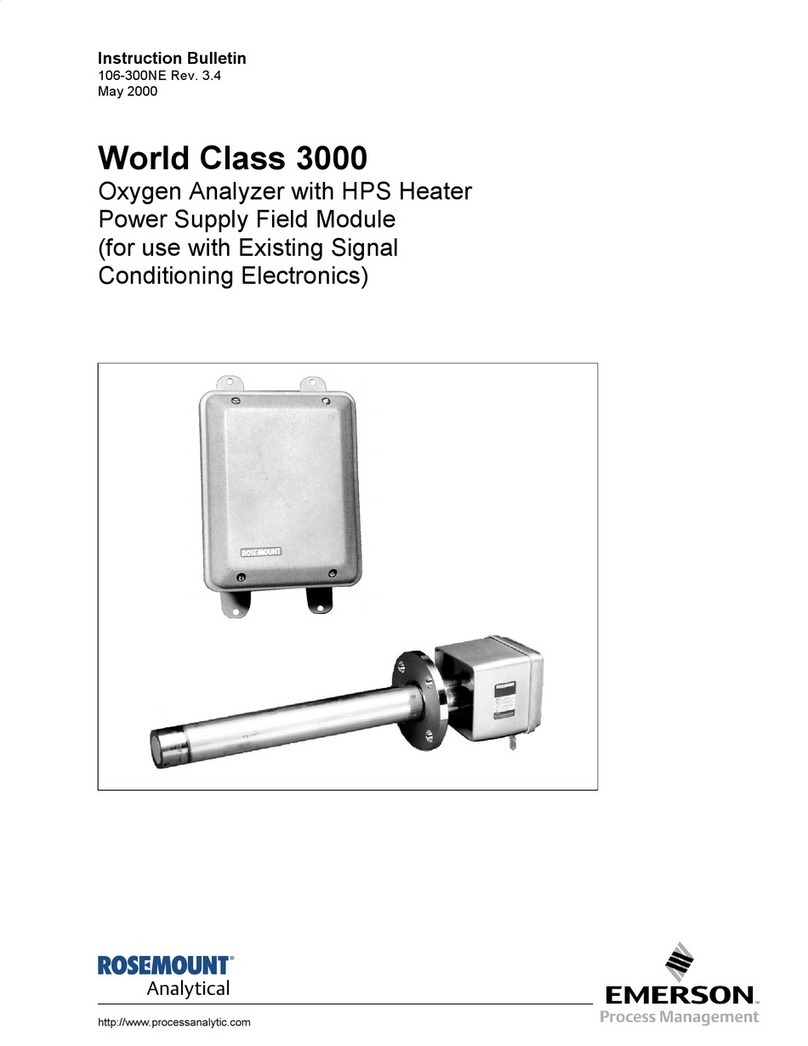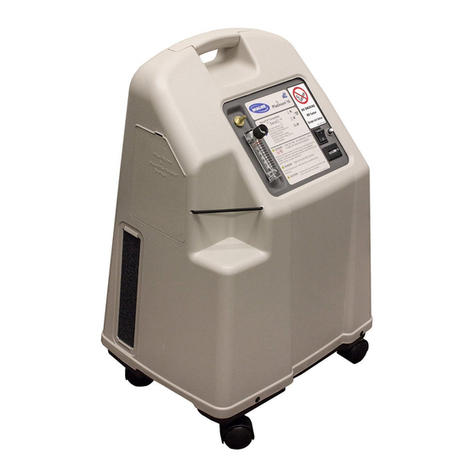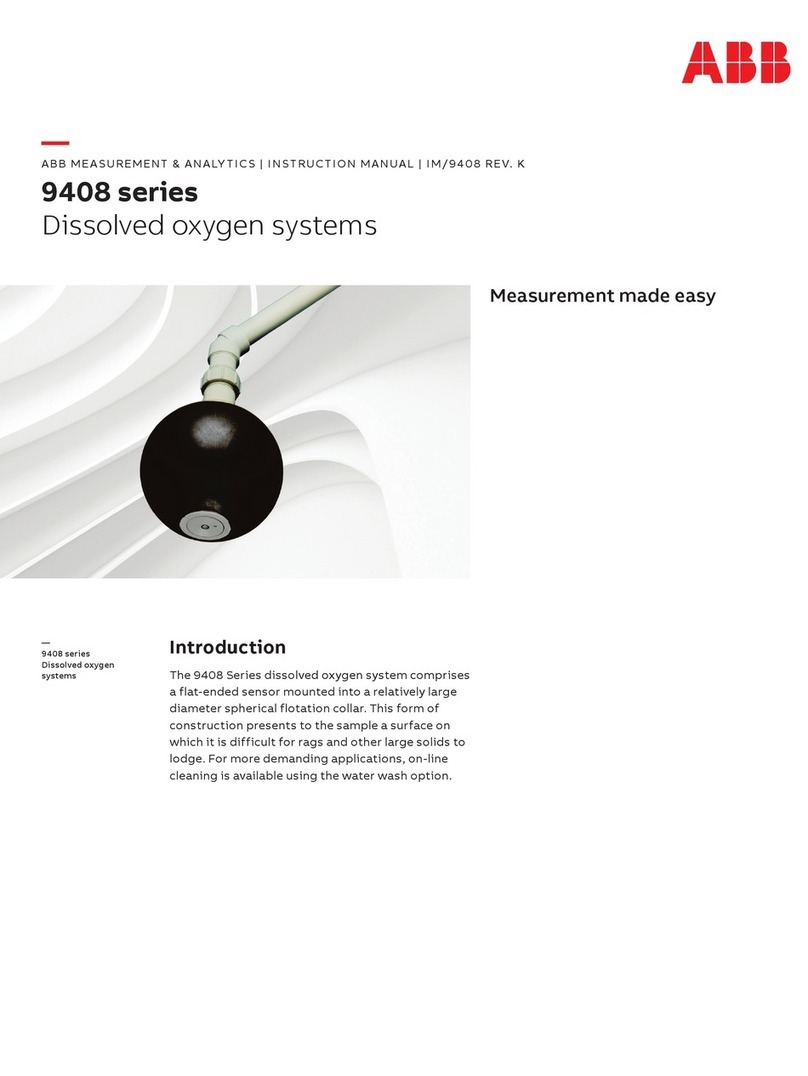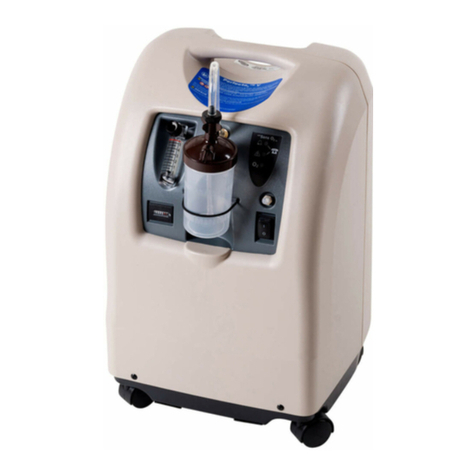
ENGLISH 2WWW.MAXTEC.COM • (800) 748-5355
This manual describes the function, operation and maintenance of the Maxtec Model MaxO2ME
oxygen monitor. The MaxO2ME utilizes the Maxtec Max-550E oxygen sensor and is engineered
for fast response, maximum reliability and stable performance. The MaxO2ME is designed
primarily for continuous monitoring of oxygen levels delivered by medical oxygen delivery
equipment and respiratory care systems. Adjustable high and low level alarm set points make
the MaxO2ME ideal for use in neonatal, anesthesia and respiratory care.
CLASSIFICATION
Protection against electric shock .........................................................................................II, Type B
Protection against water................................................................................................................IPX1
Mode of operation..............................................................................................................Continuous
Sterilization................................................................................................................... See section 6.1
Flammable anesthetic mixture ...................................................................................See section 8.1
Power specification...............................................................7.5V(MAX) 1.9W.250mA(MAX)
Product Disposal Instructions:
The sensor, batteries, and circuit board are not suitable for regular trash dis-
posal. Return sensor to Maxtec for proper disposal or dispose according to local
guidelines. Follow local guidelines for disposal of other components. There are
no special considerations for the disposal of the product packaging.
WARRANTY
The MaxO2ME Monitor is designed for medical oxygen delivery equipment and systems.
Under normal operating conditions, Maxtec warrants the MaxO2ME Monitor to be free from
defects of workmanship or materials for a period of two (2) years from the date of receipt
from Maxtec, provided that the unit is properly operated and maintained in accordance with
Maxtec’s operating instructions. Based on Maxtec’s product evaluation, Maxtec's sole obliga-
tion under the foregoing warranty is limited to making replacements, repairs, or issuing credit
for equipment found to be defective. This warranty extends only to the buyer purchasing the
equipment directly from Maxtec or through Maxtec's designated distributors and agents as
new equipment. Maxtec warrants the Max-550E oxygen sensor in the MaxO2ME Monitor to
be free from defects in material and workmanship for a period of two (2) years from Maxtec's
date of shipment in a MaxO2ME unit. Should a sensor fail prematurely, the replacement sensor
is warranted for the remainder of the original sensor warranty period. Routine maintenance
items, such as batteries, are excluded from warranty. Maxtec and any other subsidiaries shall
not be liable to the purchaser or other persons for incidental or consequential damages or
equipment that has been subject to abuse, misuse, mis-application, alteration, negligence
or accident. THESE WARRANTIES ARE EXCLUSIVE AND IN LIEU OF ALL OTHER WARRANTIES,
EXPRESSED OR IMPLIED, INCLUDING WARRANTY OF MERCHANTABILITY AND FITNESS FOR A
PARTICULAR PURPOSE.
NOTE: In order to obtain optimum performance from your MaxO2ME monitor, all operation
and maintenance must be performed in accordance with this manual. Please read the manual
thoroughly before using the monitor and do not attempt any repair or procedure that is not
described herein. Maxtec cannot warrant any damage resulting from misuse, unauthorized
repair or improper maintenance of the instrument.
EMC Notice
This equipment uses, generates, and can radiate radio frequency energy. If not installed and
used in accordance with the instructions in this manual, electromagnetic interference may
result. The equipment has been tested and found to comply with the limits set forth in IEC
60601-1-2 for medical products. These limits provide reasonable protection against electromag-
netic interference when operated in the intended use environments described in this manual.
MRI Notice
This equipment contains electronic and ferrous components, whose operation can be affected
by intense electromagnetic fields. Do not operate the MaxO2ME in an MRI environment or
in the vicinity of high-frequency surgical diathermy equipment, defibrillators, or shortwave
therapy equipment. Electromagnetic interference could disrupt the operation of the MaxO2ME.
WARNINGS
Indicates a potentially hazardous situation which, if not avoided, could result in death or seri-
ous injury.
◆ Before use, all individuals who will be using the MaxO2ME must become thoroughly familiar with
the information contained in this Operation Manual. Strict adherence to the operating instruc-
tions is necessary for safe effective product performance. This product will perform only as
designed if installed and operated in accordance with the manufacturer’s operating instructions.
◆ This product is not intended as a life-sustaining or life-supporting device.
◆ Medical Oxygen should meet the requirements of USP.
◆ The Alarm limits can be set to levels that would render them useless for a particular patient's
clinical condition. Ensure that the delivered oxygen level and flow rate are set to values pre-
scribed by the patient's physician. Also ensure that the high and low alarm limits are set to
levels such that they will sound if the oxygen level is outside of safe limits. Be sure to review
and, if necessary, re-set the alarm limits when the patient's clinical condition changes or
when the patient's physician prescribes a change in oxygen therapy.
◆ To avoid explosion, DO NOT operate the oxygen monitor in the presence of flammable
anesthetics or in an atmosphere of explosive gases. Operating the oxygen monitor in flam-
mable or explosive atmospheres may result in fire or explosion.
◆ Never allow an excess length of cable near the patient’s head or neck, as such could result in
strangulation. Secure excess cable to the bed rail or suitable object.
◆ Never use a MaxO2ME monitor with a cable that appears worn, cracked or has damaged
insulation.
◆ The oxygen sensors contain a weak acidic solution encapsulated in a plastic housing. Under
normal operating conditions the solution (electrolyte) is never exposed. In case of a leak or if
damaged, DO NOT use the oxygen sensor.
◆ Use only genuine Maxtec accessories and replacement parts. Failure to do so may seriously
impair the monitor’s performance. Repair or alteration of the MaxO2ME beyond the scope of the
maintenance instructions or by anyone other than an authorized Maxtec service person could
cause the product to fail to perform as designed. No modification of this equipment allowed.
◆ Calibrate the MaxO2ME weekly when in operation and if environmental conditions change
significantly. (I.e., Temperature, Humidity, Barometric Pressure. Refer to section 2.2
Calibration of this manual).
◆ Use of the MaxO2ME near devices that generate electrical fields may cause erratic readings.
◆ If the MaxO2ME is ever exposed to liquids (from spills or immersion) or to any other physical
abuse, turn the instrument OFF, remove batteries and allow to dry completely, then power ON.
This will allow the unit to go through its self test and make sure everything is operating correctly.
Conforms to:
AAMI STD ES60601-1, ISO STD
80601-2-55, IEC STDS 60601-
1-6, 60601-1-8 & 62366
Certified to:
CSA STD C22.2 No. 60601-1
Maxtec
2305 South 1070 West
Salt Lake City, Utah 84119
USA
phone: (800) 748.5355
fax: (801) 973.6090
email: sales@maxtec.com
web: www.maxtec.com
NOTE: The latest edition of this operating manual can be downloaded from our website at www.maxtec.com
EN Instructions for Use

